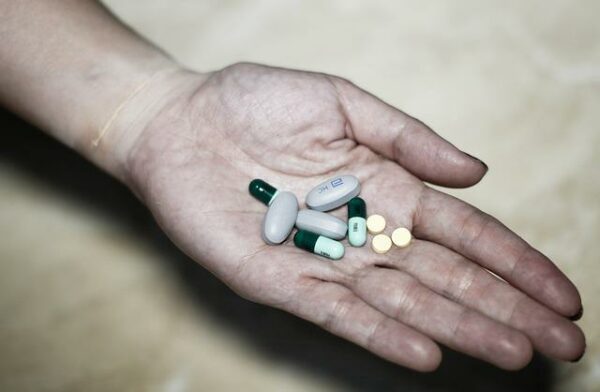Converting Risperidone to Other Antipsychotics
Lifelong antipsychotic therapy is often needed to adequately manage psychiatric conditions. Unfortunately, therapy often needs to be adjusted to optimize efficacy while avoiding undesirable side effects. Risperidone (Risperdal) is a second-generation antipsychotic (SGA) commonly used in practice but tends to have a higher risk of producing certain adverse effects compared to other SGAs. The following cases highlight instances when risperidone conversion may be appropriate and also provide guidance on how to successfully convert based on pharmacokinetic properties.
Case 1: Drug-Induced Hyperprolactemia & Sexual Dysfunction
JN is a 26-year-old female who was titrated up to risperidone 6 mg daily one month ago. She reports that the voices in her head are much quieter, though she complains that she is one week late for her menstrual period and describes milky discharge from her breasts. A negative hCG test confirms that she is not pregnant but labs did reveal an elevated prolactin level of 88 ng/mL.
Dopamine in the tuberoinfundibular pathway suppresses prolactin production. Dopamine blockade results in disinhibition of prolactin, potentially causing hyperprolactinemia or symptoms of sexual dysfunction. Though not life-threatening, chronic hyperprolactinemia can cause infertility, bone loss, and other issues. Risperidone is a high-potency agent with poor blood-brain barrier penetration, interacting more readily with the pituitary gland. This equates to its increased risk for hyperprolactinemia compared to other SGAs. SGAs, such as aripiprazole or quetiapine, are considered prolactin-sparing as they are far less likely to cause elevations in prolactin. Since aripiprazole has a long half-life (~75 hours), a cross-titration would be needed to ensure that JN maintains levels of risperidone prior to the onset of aripiprazole and avoid relapse. Aripiprazole should be started immediately at 10 mg daily and titrated every 2 weeks as needed. Since JN is currently taking a high dose of risperidone (>3 mg/day), her dose can be reduced by 50% to 3 mg daily for 5 days, then stopped. Aripiprazole is more activating than risperidone, and therefore, symptoms of akathisia, agitation, irritability, and insomnia should be monitored.
Case 2: Converting From Oral To LAI
PM is a 29-year-old male with bipolar disorder type 1 that has currently been well-controlled with risperidone 4 mg daily for the past 4 years. He denies hallucinations or other bothersome side effects. He inquires today about Risperdal Consta after seeing an advertisement on his phone. He feels that he would benefit from not having to remember to take his medication every day.
PM is the perfect candidate for a long-acting injectable (LAI) formulation. He is on a consistent dose of risperidone, tolerates it without bothersome side effects, and has been taking it for the past 4 years. Risperidone is available in two different formulations: Risperdal Consta and Risperdal Perseris. Risperdal Consta is a biweekly, intramuscular injection that uses microsphere technology to slowly release risperidone over several weeks. Dose conversions from oral risperidone to ER IM risperidone are suggested as follows:
| Current Oral Dose | Suggest Extended-Release Dose |
| ≤3 mg/day oral | 25 mg IM every 2 weeks |
| >3 to ≤5 mg/day oral | 37.5 mg IM every 2 weeks |
| >5 mg/day oral | 50 mg IM every 2 weeks |
Since drug release is delayed after injection, oral overlap is needed to ensure concentration levels remain at therapeutic levels during the first 3 weeks following initiation. Therefore, PM should receive Risperdal Consta 37.5 mg IM today and continue risperidone 4 mg daily for 21 days, then stop.
Case 3: Development of EPS – Risperidone Conversion
CD is a 19-year-old female who was discharged last week after increased agitation, delusions, and hallucinations. She was started on risperidone and titrated to 5 mg daily prior to discharge. She presents today for her first-episode psychosis appointment and explains that though she can think clearer, she can’t “sit still” and “can’t take it anymore.” She took her last dose of risperidone yesterday.
EPS is still possible even with SGAs. Risperidone is a high-potency SGA, making it more prone to inducing side effects related to dopamine blockade. Risperidone conversion would be appropriate in this situation. Low-potency SGAs, like quetiapine, are much less likely to cause EPS due to their transient binding to dopamine receptors. Similar to Case 1, higher doses of risperidone should be gradually titrated while initiating an alternative antipsychotic. Therefore, risperidone should be reduced by 50% to 2.5 mg daily for 5 days, then stopped. Quetiapine should be started as indicated. For example, XR tablets should be started at 50 mg daily on day 1, 100 mg daily on day 2, 200 mg daily on day 3, 400 mg daily on day 4, and titrated as needed thereafter. CD should be monitored for postural hypotension and falls, particularly during titration, as well as increased sedation and anticholinergic effects.
This article on risperidone conversion was written by Alyssa Butterfield PharmD Candidate in collaboration with Eric Christianson, PharmD, BCPS, BCGP



0 Comments